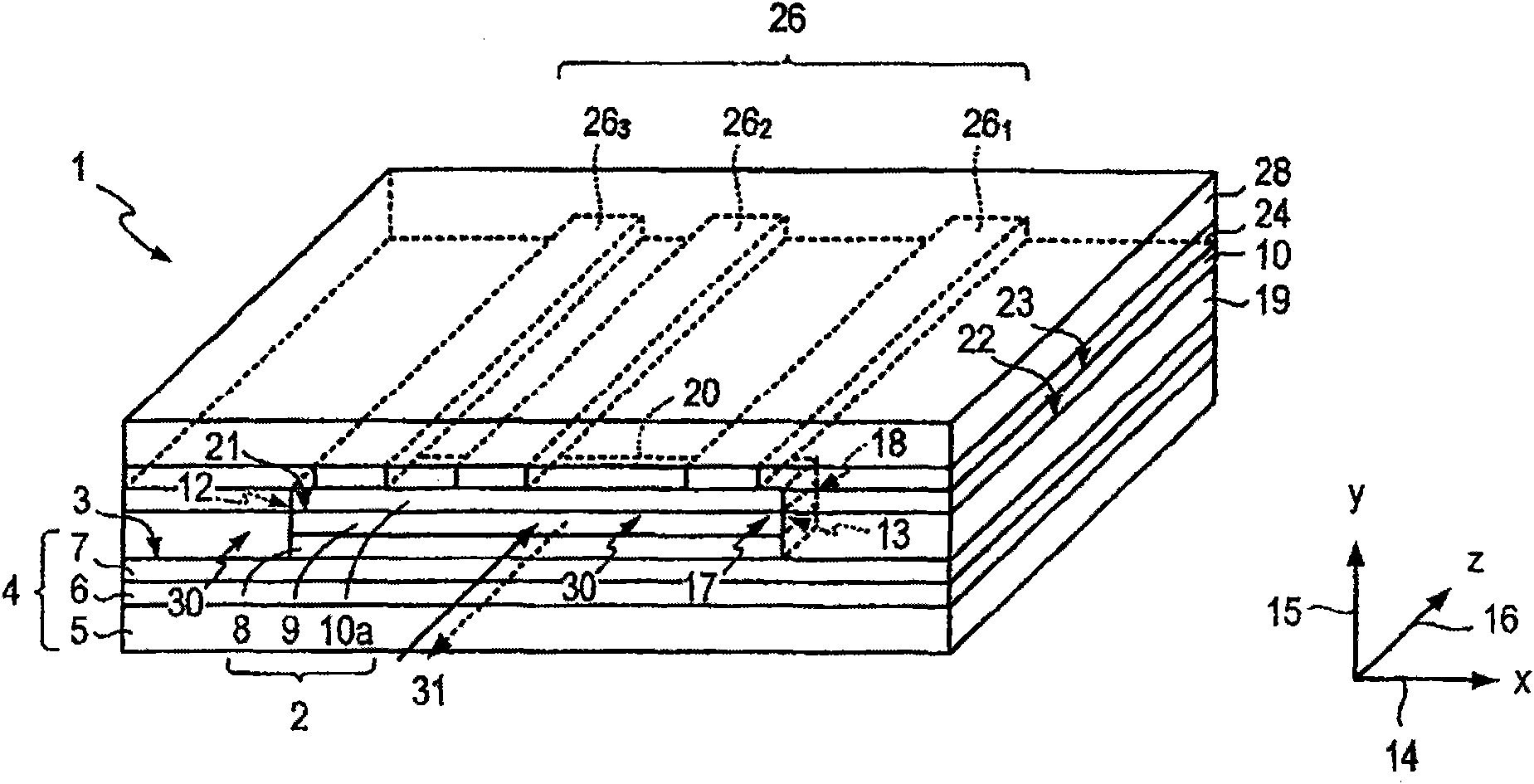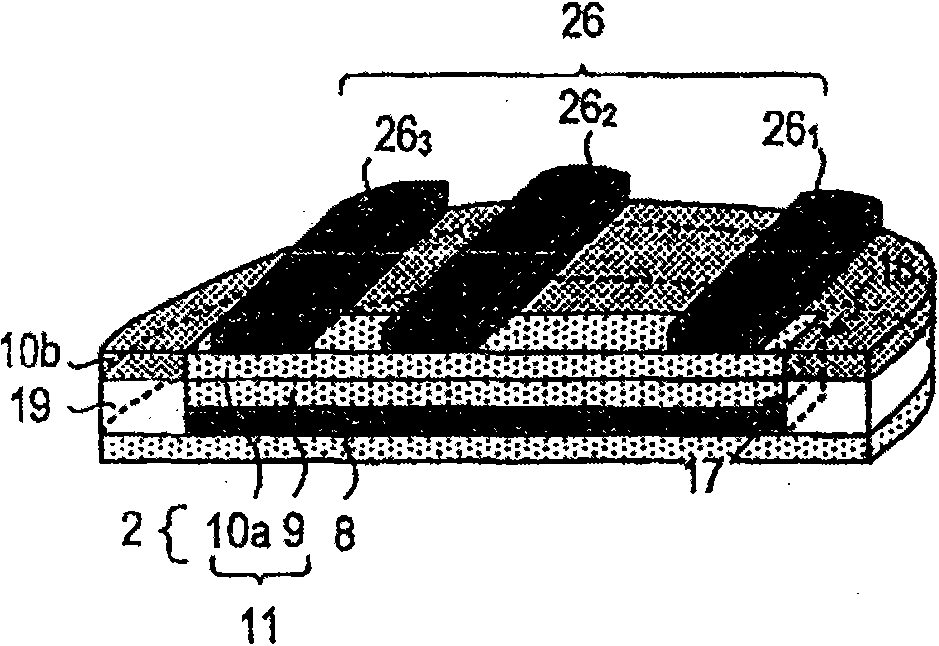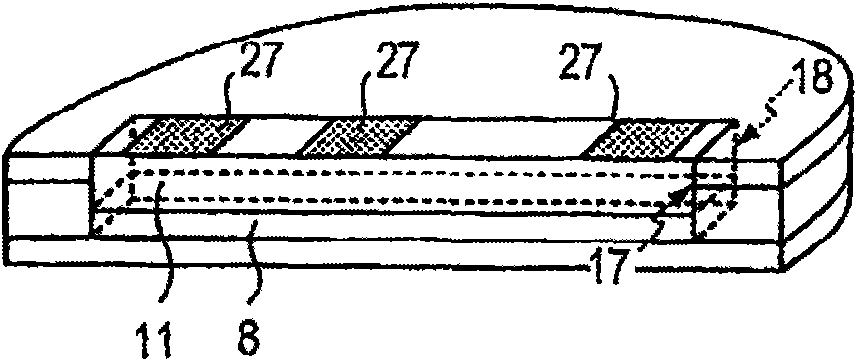Magnetoresistance device
A magnetoresistive device, the technology of the device, applied in the fields of magnetic field controlled resistors, instruments, magnetic recording, etc., can solve the problems of reducing the output signal, reducing the magnetic field strength, increasing the separation, etc.
- Summary
- Abstract
- Description
- Claims
- Application Information
AI Technical Summary
Problems solved by technology
Method used
Image
Examples
Embodiment Construction
[0077] First magnetoresistive device 1
[0078] Device structure
[0079] refer to figure 1 , 1a , 1b, 2 and 3, show the first magnetoresistive device 1.
[0080] The component 1 comprises a layer structure 2 arranged on a surface 3 of a generally planar substrate 4 . The substrate 4 takes the form of a semiconductor-on-insulator substrate, which includes a semiconductor base 5 (hereinafter referred to as a "handle layer"), an insulating buried layer 6, and a layer having a thickness t 1 semiconductor top layer 7 . As will be described in detail below, the semiconductor surface layer 7 uses a seed layer for the subsequent epitaxial growth of the layers 8, 9, 10a. The semiconductor substrate 5 and the insulating buried layer 6 may be sacrificial layers. Another substrate 64 ( Figure 19 ) can be connected to face 65 on the opposite side of the remainder of the device ( Figure 19 ).
[0081] In this example, a silicon-on-insulator substrate 4 is used. Thus, the semi...
PUM
 Login to View More
Login to View More Abstract
Description
Claims
Application Information
 Login to View More
Login to View More - R&D Engineer
- R&D Manager
- IP Professional
- Industry Leading Data Capabilities
- Powerful AI technology
- Patent DNA Extraction
Browse by: Latest US Patents, China's latest patents, Technical Efficacy Thesaurus, Application Domain, Technology Topic, Popular Technical Reports.
© 2024 PatSnap. All rights reserved.Legal|Privacy policy|Modern Slavery Act Transparency Statement|Sitemap|About US| Contact US: help@patsnap.com










